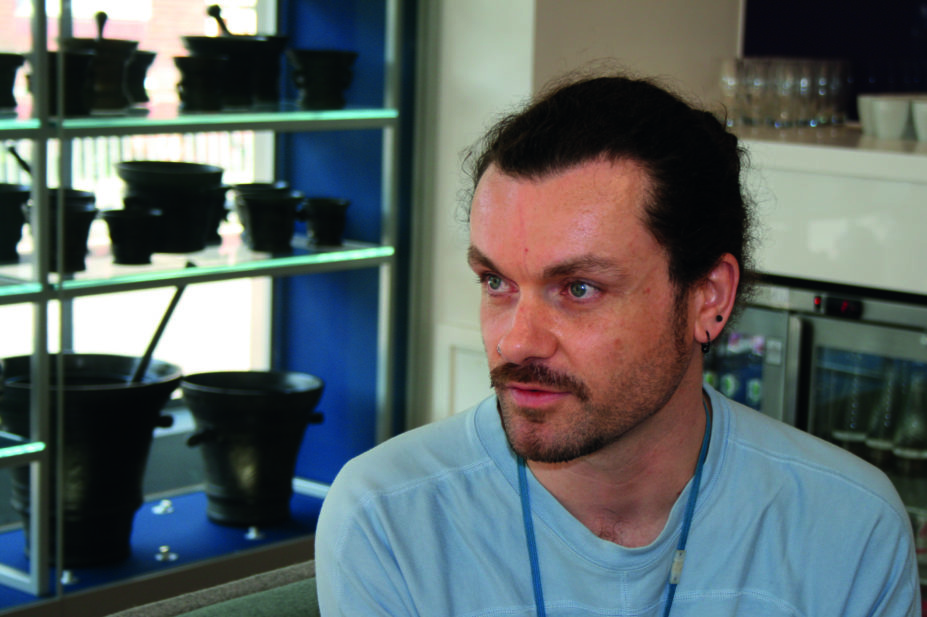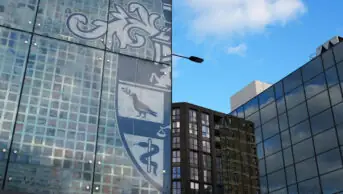
MAG / The Pharmaceutical Journal
What does a museum keeper do?
I’m similar to a curator, in that I manage our collections. I create displays, look out for any objects that need conserving, and make sure that collections are stored correctly, in controlled environments. I also oversee how the museum is used, making sure that we’re actively working to promote the history of British pharmacy.
You’ve just created an app for the museum. Tell us about that.
Part of the remit of the museum is to widen access to the collection. That obviously includes physical access — people coming on site to see the museum — but it also covers digital access. Developing an app is a way of reaching people who may not be able to physically come to the museum. It can also encourage people to come in and view the collection.
The app features highlights from the Society’s collection. It is suitable for iPhones and iPads, and can be downloaded free from the iTunes store. We have currently got 120 objects on there, and we will be adding more over time. It is not static. We have a large collection to work with.
Is the app intended as a stand-alone piece, or as a doorway to the gallery space?
It is more of a stand-alone thing. It is not intended as a digital guide to lead you around the physical displays. The museum takes a chronological look at the development of pharmacy in the UK. The app is not structured in the same way — instead, it groups objects under six themes: RPS Collection Highlights, Faces of Pharmacy, Places of Pharmacy, Regard for Health, Making Medicines, and Drugs to Market.
We worked with a company called Nymbol. They have a lot of experience of putting together museum apps. Nymbol used the aims of the museum, and the different strands that we promote, to come up with the themes.
What features does the app have?
We brought in photographers to get a lot of new high-resolution photos, and the app allows you to zoom right in on the object’s details. There are some really close-up photos of 18th century bees from our Materia Medica collection. You can see all the hairs on them. It was fascinating looking at the objects so closely, and seeing detail that has never been seen before; that the naked eye cannot see.
The app has basic social media options, so users can share objects with their followers. There will also be a map feature, so people can see where in the country an object relates to. So if we have a photo of a Victorian pharmacy, you can see where that pharmacy was — or where an object was made, or a drug was developed.
Who is the app aimed at, and what do you want people to get out of it?
Like the museum itself, it is aimed at members and the general public. We want RPS members to be interested in the history of their profession. Most schools of pharmacy do not teach the profession’s history: obviously [pharmacy is] a very skilled, hands-on job, so students are taught what they need to know now, not what it was like being a pharmacist a hundred years ago. But I think it is very interesting to have the context of how far the profession has come, and what drug treatments were like in the past. Everyone takes medicines, so we all have a reason to be interested. The potential audience for the museum and the app is quite large.
What is it like translating a narrative from gallery space into digital space?
Not easy. When an object is on display in a case, much of its meaning comes from the other objects surrounding it. When we wrote the app text, we had to be mindful that the object is now being viewed on its own. So you have to not only describe the object, but provide historical background and context.
Selecting the best objects to illustrate each theme was another challenge. Some objects fit clearly under a single theme, but some other objects really important to the history of pharmacy do not. So they pop up in two or three themes. But the app is not an online catalogue of everything we have: you are not going to see every single mortar in our collection. We selected single key examples of each type of object — the most significant Delftware drug jar; the most important mortars or caricatures.
We have also tried to emphasise the artistic elements of certain objects, like the design of the English Delftware jars, and what their symbolism might mean. That is another way of attracting people. A couple of years ago we worked with a design student who used our Delftware jar collection as a starting point for her own ceramics. She produced drug jars that were designed to show the symptoms of the disease that the drug was used to treat — one jar looked like the bone of someone with syphilis, and another represented the skin of a patient with eczema or psoriasis. We still want to keep the science element of our collection, but people can interpret objects in different ways.
Talking of art, there are a lot of caricatures in the museum collection, some of which are on the app. What was the purpose of medical caricatures?
Caricaturists of the 1800s would mock the institutions of the day, which included physicians, apothecaries, and chemists and druggists. Often, they are portrayed as being quite self-important. At that time, the popular view was that many medical professionals did not know what they were doing, and even that they were rather unscrupulous people. Caricaturists portrayed quack doctors who made outrageous claims for their medicines, many of which did more harm than good. Caricatures are an insight into how pharmacy was viewed at the time, and how professionals viewed themselves.
Caricatures also show us the patient’s perspective. Medical treatments were pretty harsh, and not always terribly effective. Many caricatures showed what it was like to be a patient. You can see the facial expressions of patients, giving you an idea of what it was like having your stomach cleared out with a strong medicine.
What else are you up to at the moment?
We are busy with research. We have a lot of apothecary drug jars and mortars that feature names or initials. Working collaboratively with the Worshipful Society of Apothecaries, we are going through their lists of members in the 1600s and 1700s and trying to find out who owned these drug jars, and which shops they were made for. It brings to life the fact that these objects were actually used on a daily basis by a medical professional.
Our museum and research teams are also collaborating with researchers studying historical skincare products. It is an 18-month project led by Oxford University and funded by the Arts and Humanities Research Council. We are looking at the evolution of skincare products over time, studying their ingredients, their packaging and the associated commercial communication. Where possible, we are allowing sampling and analysis of skincare products in the museum collection, to ascertain the ingredients used. We are only allowing this where we have duplicate examples, or if the sampling process does not damage the specimen. We want to reveal the ingredients in historical skincare products: manufacturers were not obliged to disclose the ingredients of most medicinal preparations until 1941, so this research could reveal previously unknown formulas. Later this year, the museum will present a temporary exhibition related to the project and the research findings.
How does the RPS museum fit within the wider museum community?
We are a member of the London Museums of Health and Medicine group. A lot of museums in that group are quite small, so we collaborate to run events. It helps us reach a larger audience. We also loan objects to other museums or exhibitions — we have some Nuremburg nested apothecary weights from the mid-1500s currently being displayed in an exhibition at the Royal College of Physicians.
We recently took part in an object handling event at the Science Museum, at one of their ‘Lates’ events. These are adults-only evenings, in which the entire museum opens until 10pm. Object handling lets people get close to museum collections in a way that they wouldn’t normally be able to do. We interacted with people that may not have heard of us before.
What are your hopes for the museum in future?
The museum has been closed to the public of late, while refurbishments were made to the ground floor of the RPS building. It will fully open to the public in the late summer, but in the meantime, people can still book guided tours with the museum team.
Now that we have finished work on the new displays, and the app, the next job is to really promote the museum. I would like to market it through schools of pharmacy more, and get students engaged with it. I would like to market it more to members; and also market it as a visitor attraction. We are near a lot of tourist spots, such as Tower Bridge and the Tower of London. We need to tap into that, especially as it helps to promote pharmacy generally to the general public.
Most people think of health in the here and now — a museum makes you think about what it was like to be a patient many years ago and the treatments you would have had and just how far the discipline has developed — although development is not always an upward curve; mistakes are made along the way.
To book a guided tour of the RPS Museum, email the team at museum@rpharms.com or call 020 7572 2210.

